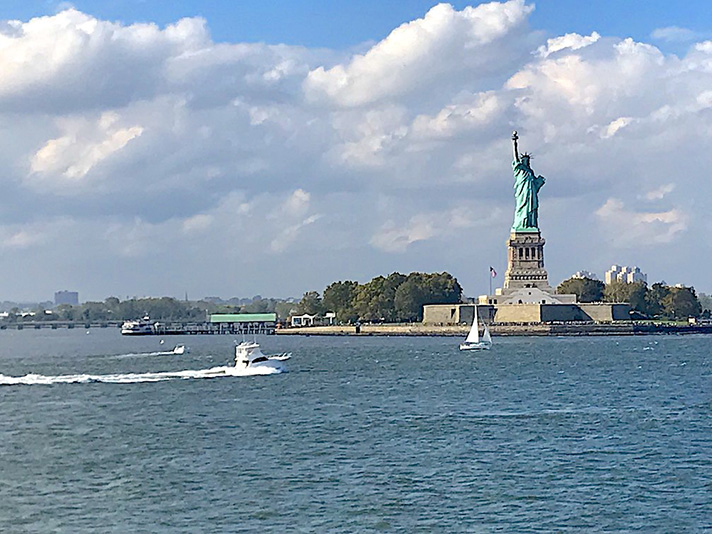
The Statue of Liberty in New York Harbor started life with a double identity – it was a lighthouse, too; image by Tom Adkinson. |
STATEN ISLAND, New York – Forgive the pun, but the National Lighthouse Museum isn’t all that flashy.
However, just to get to the museum, most people pass right by what probably is the best-known lighthouse in the world – the Statue of Liberty in New York Harbor – but more on that later.
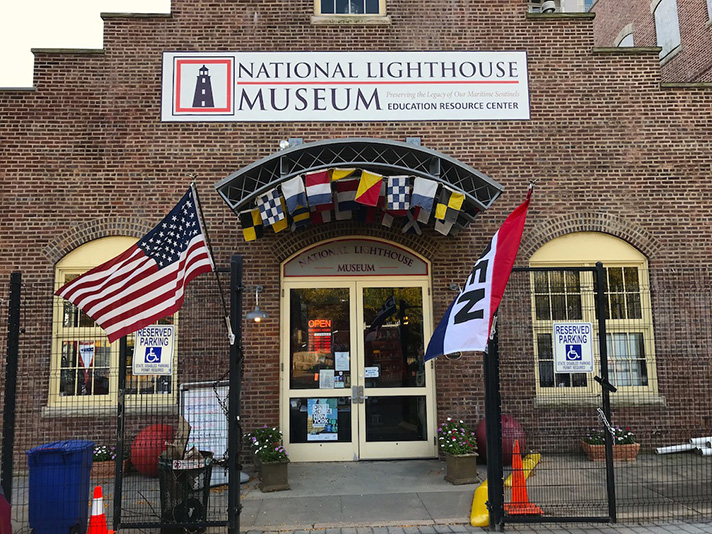
The red-brick, industrial exterior of the National Lighthouse Museum fits its historical story about U.S. lighthouses; image by Tom Adkinson. |
Unlike conspicuous lighthouses that keep boaters and sailors safe, the National Lighthouse Museum occupies a red brick, low-rise industrial building barely a five-minute walk from the St. George terminal of the Staten Island Ferry. There’s no tower, no whirling beacon in the dark, just a load of history in a very appropriate location.
That appropriate location is a portion what once was the general depot for the entire U.S. Lighthouse Service. From 1864-1939, the depot was the national headquarters, testing ground and distribution center for all materials and equipment used by all U.S. lighthouses – everything from dustpans and toilet paper holders to heavy machinery. Only six of the complex’s 18 original buildings remain, and one houses the museum.
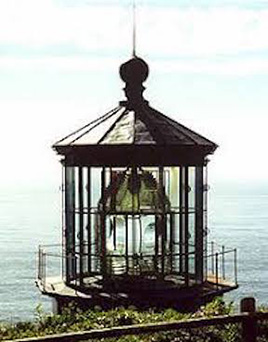
The Fresnel lens in Oregon’s Cape Meares Lighthouse is one “that saved a million ships.” |
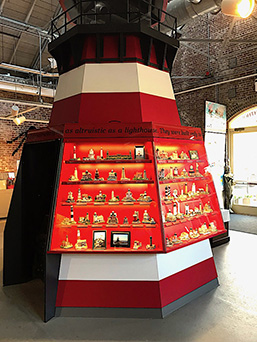
This lighthouse-shaped display showcases an array of U.S. lighthouse models used in a museum fundraising project; image by Tom Adkinson. |
The museum is in a foundry building built in 1912. It is a modest 2,400 square feet, but it is packed with artifacts, displays and plenty of lighthouse trivia. Volunteers provide some of that trivia.
On my visit, volunteer Bob Eisle told me that the largest Fresnel lighthouse lens ever built came through the depot destined for the smallest U.S. lighthouse, which he pinpointed at Pearl Harbor, Hawaii. Fresnel lenses, named for their French physicist inventor, have been called “the invention that saved a million ships.”
(Eisle himself is a tribute to museum volunteers everywhere. He said he’s at the museum only five days a week because management “forces me to take two days off.”)
Museum tours are self-guided, but there are monthly lectures, group tours by appointment and the bonus of seasonal lighthouse boat tours (May-October). The boat tours visit lighthouses that can’t be seen from land, ship graveyards and bird sanctuaries you might not expect in metro New York.
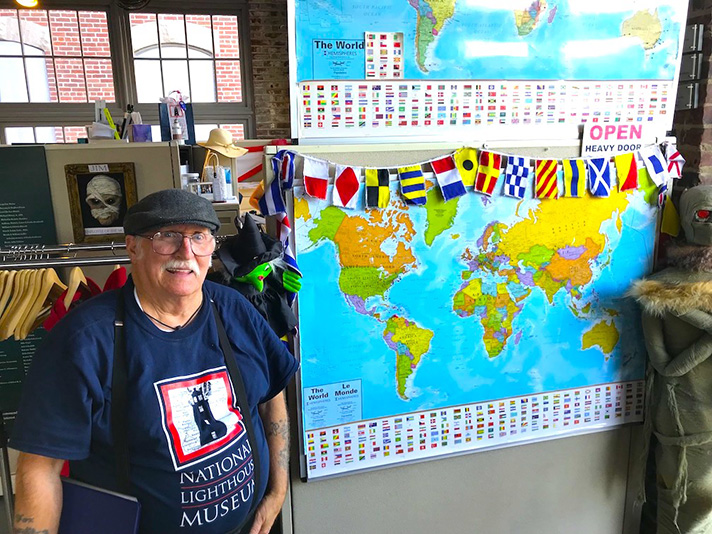
Bill Eisle is one of the volunteers who brings the National Lighthouse Museum to life; image by Tom Adkinson. |
There’s even a “Haunted Halloween East River Tour” to Execution Rocks Lighthouse that’s complete with a DJ, a buffet dinner and awards for the best maritime and creepy costumes. The site of the Execution Rocks Lighthouse is a shoal, where unproven legend says British soldiers executed colonial criminals by chaining them to rocks at low tide and leaving them for high tide to be the executioner. Fitting for a Halloween destination, no?
Now, consider the lighthouse history of the Statue of Liberty. Most museum visitors arrive via the Staten Island Ferry from lower Manhattan, which passes directly by Lady Liberty. The statue was dedicated in 1886 and was an operational lighthouse from then until 1902. The statue’s torch is 305 feet above sea level, and it contained nine electric arc lamps visible 24 miles to sea.
The lighthouse keeper was Albert Littlefield for the entire time the statue had a dual purpose, and it was a plum job. The normal annual salary for a lighthouse keeper was $600, but Littlefield earned the princely sum of $1,000 – as well as being the answer to a rather esoteric trivia question about lighthouse history.
Trip-planning resources: LighthouseMuseum.org
(Travel writer Tom Adkinson’s new book, 100 Things To Do in Nashville Before You Die, is available at CornersOfTheCountry.com.)

